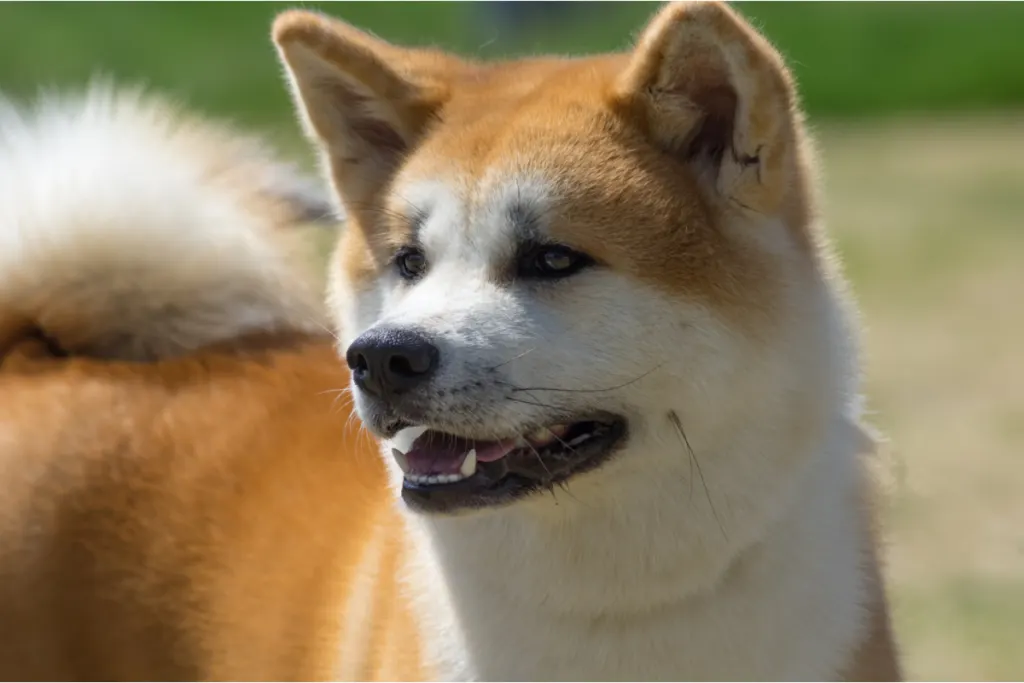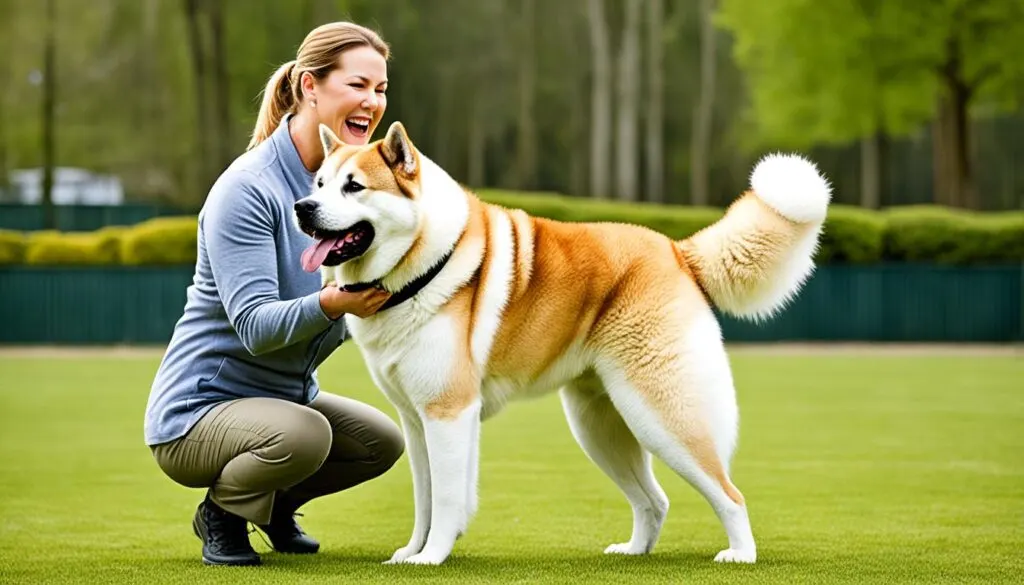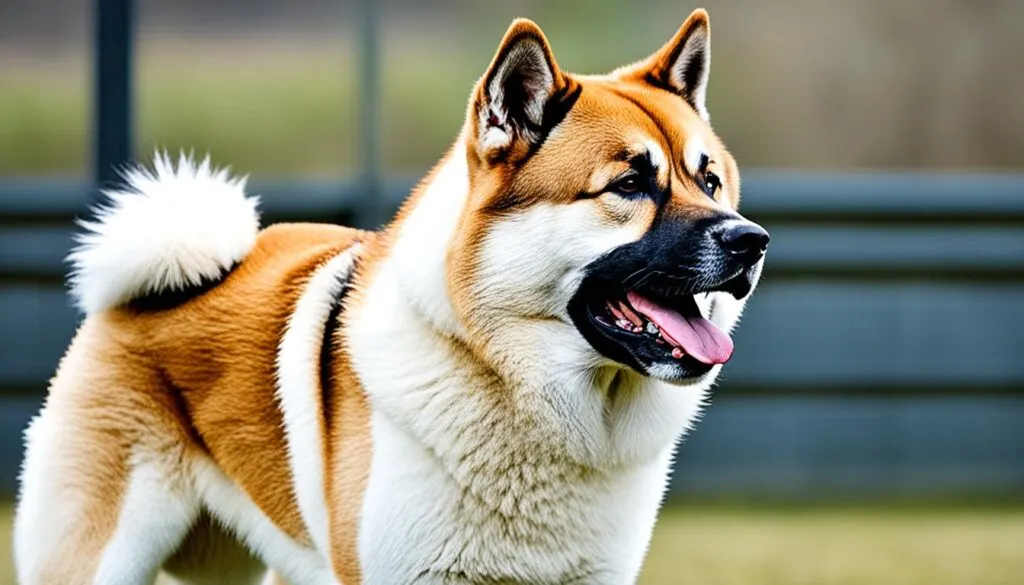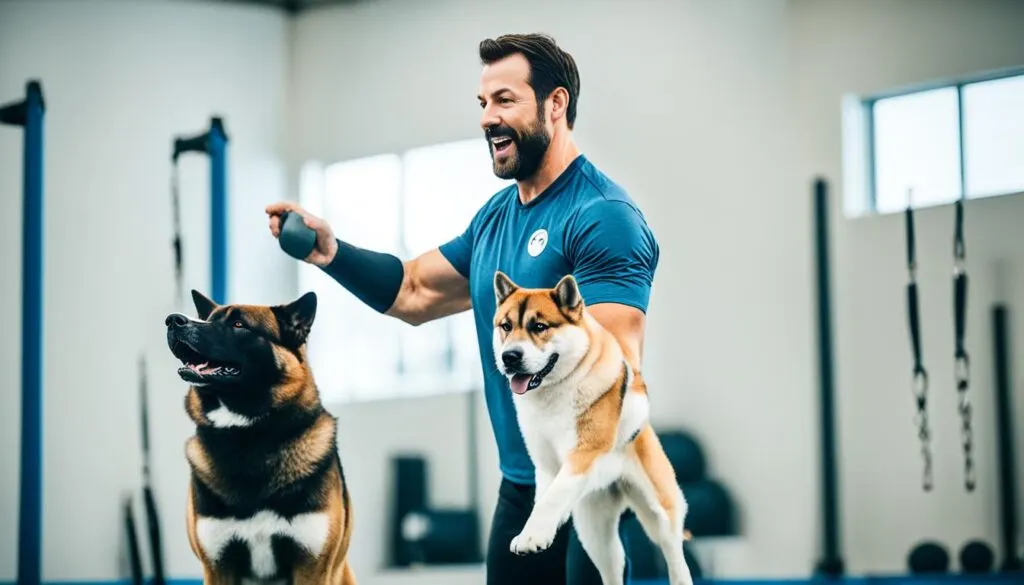Did you know that Akitas are known to exhibit aggression towards their owners more frequently compared to other dog breeds?
This startling fact raises concerns about the potential risk of an Akita turning on its owner and biting.
In this article, we will investigate the factors that contribute to Akita aggression, explore their natural tendencies, and provide insights on managing and preventing any potential attacks.

Click Here to Jump to a Section
Key Takeaways:
- Akitas have a higher tendency to exhibit aggression towards their owners compared to other breeds.
- Understanding the natural characteristics and tendencies of Akitas can help assess the likelihood of aggressive behaviors.
- Various factors can contribute to aggression in Akitas, including genetic predispositions and environmental triggers.
- Recognizing the warning signs of aggression can aid in addressing and modifying Akita behavior through training and socialization.
- Responsible ownership, proper training, and ongoing education are essential for preventing Akita attacks and ensuring owner safety.
Understanding Akita Tendencies
Akitas are known for their unique set of characteristics and tendencies that shape their behavior towards their owners.
Understanding these innate qualities is essential in evaluating the likelihood of an Akita turning on its owner and exhibiting aggressive behavior.
One prominent aspect of Akita behavior towards owners is their loyalty and protectiveness.
Akitas have a strong bond with their human family and possess an inherent desire to safeguard them.
This protective instinct can manifest in various ways, such as vigilantly patrolling the perimeter of their territory or closely monitoring the activities of their owners.
Another vital trait to consider is the Akita’s independent nature.
Akitas are often described as having a cat-like personality, displaying a sense of aloofness and self-reliance.
This independence can contribute to their behavior towards owners, as Akitas may exhibit a more reserved demeanor compared to other dog breeds.
Additionally, Akitas have a strong sense of hierarchy within their social structure.
This hierarchical mindset may lead Akitas to test the authority and dominance of their owners, especially if they perceive a lack of consistent leadership or clear boundaries.
Establishing yourself as the pack leader through consistent training and assertive yet gentle guidance is crucial in managing an Akita’s behavior.
Understanding the natural tendencies of Akitas helps owners navigate and prevent potential issues that may arise from their protective instincts, independent nature, and hierarchical mindset.
To gain a deeper insight into Akita tendencies, it is essential to consider their breed history.
Originally developed in Japan for guarding purposes, Akitas possess a strong sense of territoriality and a natural wariness towards strangers.
This aspect of their temperament impacts their behavior towards owners, as they prioritize the security and well-being of their immediate family.
As responsible owners, it is crucial to acknowledge and respect the unique traits of Akitas.
By fostering a balanced environment that provides the necessary leadership, guidance, and socialization, owners can help cultivate a harmonious bond with their Akita while minimizing the risk of aggressive behavior.
To visually illustrate the loyalty and protectiveness of Akitas, take a moment to appreciate the image below:
Causes of Aggression in Akitas
Aggression in Akitas can be caused by various factors, and understanding these triggers is crucial in managing and preventing aggression-related incidents.
By addressing the root causes, Akita owners can create a safe and harmonious environment for both themselves and their loyal companions.
Potential Triggers for Aggressive Behaviors
Akitas, known for their strong protective nature, may exhibit aggression in certain situations. Key triggers for aggression in Akitas can include:
- Lack of socialization: Akitas that have not been properly socialized during their formative months may develop fear and aggression towards unfamiliar people or animals.
- Territorial instincts: Akitas are naturally protective of their home and family, which can result in aggression towards perceived threats or intruders.
- Poor breeding practices: Irresponsible breeding can contribute to behavioral issues in Akitas, including aggression. Proper research and selecting a reputable breeder can reduce the risk.
- Pain or medical conditions: Like any living being, Akitas may display aggression when they are in pain or discomfort due to an undiagnosed medical condition. Regular veterinary check-ups are essential.
Managing and Preventing Aggression in Akitas
Preventing Akita attacks and managing aggression requires a proactive approach and consistent effort. Here are some strategies to consider:
- Early socialization and training: Start socializing your Akita from a young age, exposing them to various people, animals, and environments. Proper obedience training is also essential in establishing boundaries and preventing aggressive behaviors.
- Positive reinforcement: Use rewards and positive reinforcement techniques to encourage desired behaviors and discourage aggression. Rewarding calm and non-aggressive reactions can help shape their behavior.
- Safe interactions: When introducing Akitas to new people or animals, ensure that the interactions are controlled and supervised. Gradual introductions and positive experiences can help them build trust and reduce aggression.
- Seek professional help: If your Akita displays persistent aggression despite your efforts, consult with a professional dog trainer or behaviorist experienced in managing Akita aggression.
- They can provide specialized guidance and techniques tailored to your specific situation.
By understanding the causes of aggression in Akitas and implementing appropriate management strategies, owners can mitigate the risk of Akita attacks and create a safe and harmonious bond with their beloved pets.

Signs of Aggression in Akitas
Akitas are known for their strong protective nature, but it’s essential for owners to be able to recognize the warning signs of aggression. By understanding these signs, you can take proactive measures to address and modify aggressive behavior through proper training and socialization.
One of the most obvious signs of aggression is growling or snarling. When an Akita feels threatened or uncomfortable, they may vocalize their displeasure through these aggressive sounds. It’s important to pay attention to your dog’s body language during these episodes.
Another sign to watch out for is a stiff, rigid posture. Akitas may raise their hackles, stand tall, and become motionless when they feel threatened or are preparing to act aggressively. This combination of physical cues can indicate that your Akita is ready to defend itself.
Excessive barking, lunging, and snapping are also indicators of aggression. If your Akita is displaying these behaviors towards people, other animals, or objects, it’s crucial to address the issue promptly to prevent any potential harm.
Sudden and unpredictable displays of aggression can also be a cause for concern. Akitas that exhibit unprovoked aggression or aggression in response to seemingly harmless stimuli may require professional intervention to identify and address the underlying causes.
In order to provide the best environment for your Akita, it’s important to invest in proper training and socialization. Enrolling your Akita in obedience classes and providing opportunities for positive interactions with people and other animals can help reduce the likelihood of aggression.
Remember, each Akita is unique, and signs of aggression can vary from one dog to another. If you suspect that your Akita is showing signs of aggression or you need assistance in training your dog, it is recommended to consult with a professional dog trainer or behaviorist who specializes in Akita training for aggression.

Training and Socialization for Akita Behavior
When it comes to managing aggression in Akitas, a proactive approach through training and socialization is crucial.
By understanding Akita tendencies and implementing appropriate techniques, owners can foster obedience and discourage aggressive behaviors.
Here, we will explore effective methods for training and socializing Akitas that are specifically tailored to address their unique needs.
One key aspect of training Akitas is to focus on positive reinforcement.
This approach involves rewarding good behavior and ignoring or redirecting undesirable behavior.
By using treats, praise, and toys as incentives, owners can motivate Akitas to obey commands and exhibit appropriate conduct.
Consistency is vital in the reinforcement process, as Akitas thrive on routine and clear expectations.
Socialization plays a crucial role in minimizing aggression in Akitas.
Exposing them to various people, animals, and environments from a young age helps them develop confidence, adaptability, and the ability to discern appropriate behavior.
Akitas can benefit from controlled interactions with other dogs, supervised visits to public spaces, and exposure to different sights and sounds.
It’s important to note that training and socialization should be approached with caution and professionalism, especially when dealing with Akita aggression.
Seeking guidance from experienced trainers or behaviorists can provide valuable insights and ensure the safety of both the Akita and its owner.
These professionals can introduce appropriate exercises, provide guidance on managing aggression triggers, and offer advice on tailored training techniques.
Akita Training Tips:
- Start training early: Begin training your Akita as soon as you bring them home to establish good habits and a strong bond.
- Be consistent: Stick to a regular training schedule and use consistent cues and commands to avoid confusion.
- Use positive reinforcement: Reward good behavior with treats, praise, and playtime to encourage desired actions.
- Redirect unwanted behavior: Instead of punishing aggression, redirect your Akita’s focus onto acceptable activities.
- Socialize regularly: Expose your Akita to various environments, people, and animals to help them become well-rounded and confident.
By dedicating time and effort to training and socialization, owners can effectively address aggression tendencies in Akitas and create a harmonious environment for both the dog and the family. Remember, a well-trained and socialized Akita is more likely to thrive and exhibit balanced behavior.

Protecting Yourself as an Akita Owner
As an Akita owner, it is essential to prioritize your safety and establish a harmonious relationship with your powerful canine companion.
By following these practical tips, you can minimize the risk of bites and injuries and ensure a safe environment for both you and your Akita:
- Start with proper training: Adequate training is crucial for any dog, especially Akitas. Enroll your Akita in obedience classes to teach essential commands and establish clear boundaries. Consistency and positive reinforcement techniques can help reduce the risk of aggressive behaviors.
- Socialize your Akita from a young age: Early socialization is key to prevent aggression in Akitas. Introduce your Akita to different people, animals, and environments to ensure they feel comfortable and well-adjusted in various situations.
- Provide mental and physical stimulation: Akitas are intelligent and energetic dogs. Engage in regular exercise routines, such as daily walks or play sessions, to help release their energy. Additionally, provide mental stimulation through puzzle toys or training exercises to keep them mentally sharp and entertained.
- Supervise interactions with children and other pets: Akitas should always be supervised when interacting with children or other animals. Teach children how to respect the dog’s boundaries and never leave them unsupervised.
- Secure your property: Akitas are known for their protective nature. Ensure your yard is securely fenced to prevent accidental escapes and encounters with unfamiliar people or animals. Consider using additional security measures, such as outdoor cameras or secure gates, to further enhance your dog’s safety.
- Teach bite inhibition: It’s essential to train your Akita on bite inhibition, teaching them to control the force of their bite. This training can help prevent accidental injuries if your Akita becomes startled or agitated.
- Be cautious during stressful situations: Akitas may be more prone to aggression when they feel threatened or scared. Be cautious during stressful situations, such as vet visits or grooming appointments, and inform professionals about your dog’s behavior to ensure a safe and positive experience.
Remember, responsible ownership and proper training are the keys to minimizing the risk of Akita bites and creating a safe environment for both you and your beloved pet.
Seeking Professional Help
Sometimes, managing Akita aggression requires the expertise and guidance of experienced trainers or behaviorists.
Seeking professional help can be instrumental in evaluating and treating aggressive behaviors in Akitas, ensuring the safety and well-being of both the dog and its owner.
Professional trainers and behaviorists possess the knowledge and skills to assess the underlying causes of aggression in Akitas.
They can provide personalized training programs and behavior modification techniques that are tailored specifically to address the unique needs of the Akita breed.
When consulting with a professional, they will typically conduct a thorough assessment of the Akita’s behavior, history, and environment.
Based on their findings, they will develop a comprehensive plan to manage and reduce aggression, focusing on positive reinforcement and socialization techniques.
Through professional intervention, owners can gain a deeper understanding of their Akita’s aggression triggers and learn how to effectively respond to them.
Additionally, trainers and behaviorists can provide valuable guidance on establishing consistent rules and boundaries, as well as effective communication techniques between the owner and the Akita.
Remember, managing Akita aggression should always prioritize the safety and well-being of both the Akita and its surroundings.
Seeking professional help is an essential step in addressing and resolving aggression-related issues, ensuring a harmonious and fulfilling relationship between the owner and their beloved Akita.
Preventing Akita Attacks: Responsible Ownership
As a responsible Akita owner, it is crucial to take proactive measures to prevent Akita attacks and ensure the safety of both humans and Akitas.
One key aspect of responsible ownership is understanding and complying with breed-specific legislation that may be in place in your area.
Familiarize yourself with any laws or regulations regarding owning Akitas, such as leash requirements or restrictions on keeping them in certain neighborhoods.
Responsible breeding practices also play a significant role in preventing Akita attacks.
When choosing an Akita, research reputable breeders who prioritize temperament and health in their breeding programs.
A well-bred Akita with a sound temperament is less likely to exhibit aggressive behaviors.
Additionally, proper training and socialization from an early age are essential to foster a well-behaved and balanced Akita.
Continuing education is vital for Akita owners to stay informed about best practices for preventing attacks.
Stay updated on the latest training techniques and behavioral research specific to Akitas.
Attend training classes or workshops with experienced professionals who can provide guidance on managing aggression and enhancing the bond between you and your Akita.
To further ensure dog owner safety and prevent Akita attacks, it is crucial to provide a safe and enriched environment for your Akita.
Secure your property with appropriate fencing to prevent accidental escapes and encounters with strangers.
Implement a routine exercise regimen to meet your Akita’s physical and mental stimulation needs, reducing pent-up energy that can lead to aggression.
Properly socialize your Akita with other dogs and people, exposing them to various environments and situations from an early age.
